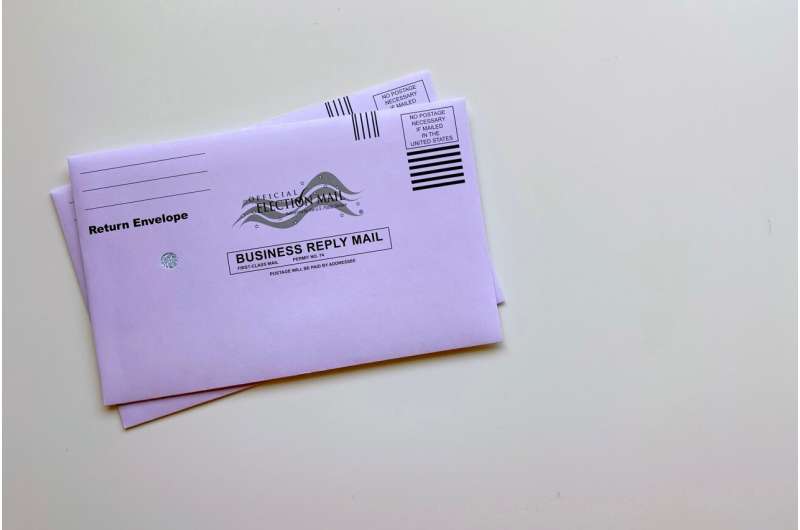This article has been reviewed according to Science X's editorial process and policies. Editors have highlighted the following attributes while ensuring the content's credibility:
fact-checked
trusted source
proofread
Study finds steep 66% drop in party registration with automatic voter registration

In 2016, Oregon became the first state to adopt and implement an automatic voter registration (AVR) system. Now, twenty-two states, plus Washington D.C., have such systems in place. Early research on the impacts of this innovation has shown an increase in the number of people registered, and greater diversity among the registrants.
Now, a researcher using Oregon voter data has identified an unintended consequence of automatic voter registration: a steep drop in party registration. These results have been published in the journal Electoral Studies in a paper called, "The partisan costs of automatic voter registration." Additional authors include Todd Lochner, Dr. Robert B. Pamplin Jr. Associate Professor of Government at Lewis & Clark College, and undergraduate student Alex Webb, '22.
The study results apply to back-end implementation of the automatic voter registration in Oregon. "Back-end" refers to a system where voters are automatically registered during a transaction at a government agency, like the Department of Motor Vehicles (DMV) and then later have the option to register a particular party or to opt-out via mail. "Front-end" implementation systems provide potential voters with the option to choose a party or opt-out during the initial transaction. The researchers found a 66% decrease in party registration impacting Democratic and Republican parties similarly with little change over time post-registration. Third-party affiliation is also greatly reduced.
Ellen Seljan, associate professor of political science at Lewis & Clark College and the lead researcher on the study, says, "In our study, back-end automatic voter registration had a significant negative effect on party registration in the state of Oregon across all demographic groups. This negative effect persists over time and is sustained despite the large increase in registration caused by automatic voter registration."
The data that Seljan and her colleagues used in their analysis came from voter files collected from the state of Oregon in 2017. The team was able to arrive at a causal estimate between automatic voter registration and party registration because of an historical Oregon statute that makes individuals born in even-numbered years more likely to have been registered to vote via automatic voter registration in 2016. This made it possible to study the behavior of a set of individuals by an external set of circumstances, as opposed to a particular trait or behavior.
Seljan wanted to see whether the drop in partisan registration persisted over time, given the fact that voters can make adjustments to their registration in a number of ways. She tested for this by looking at updated registration records from the Oregon voter file from 2021.
"This four-year time span between the two voter files we examined―from 2017 to 2021―included a presidential primary which, like all primaries in Oregon, was limited to party registrants," says Seljan. "The results suggest very little partisan mobilization occurs following registration."
The political implications of lower rates of party registration could be significant, says Seljan. First, those who do not register with a party cannot vote in closed primaries in many states, including in Oregon. In addition, political parties may focus less on those unaffiliated voters, leaving a gap in political knowledge for a large part of the electorate. Also, previous research has shown that party registration transforms the way voters perceive themselves.
"Unaffiliated self-perception and categorical identity may be fundamentally different from those of party registrants," says Seljan.
The authors note that the research's purpose is to demonstrate one unintended consequence of back-end automatic voter registration, not to imply such a system is undesirable.
"This particular way of implementing automatic voter registration is an excellent means of increasing both the number of registered voters and the eligible turnout rate," says Seljan. "It just means there's an additional burden on political parties to take extra steps to woo those unaffiliated voters."
More information: Ellen Seljan et al, The partisan costs of automatic voter registration, Electoral Studies (2023). DOI: 10.1016/j.electstud.2023.102591
Provided by Lewis & Clark College





















